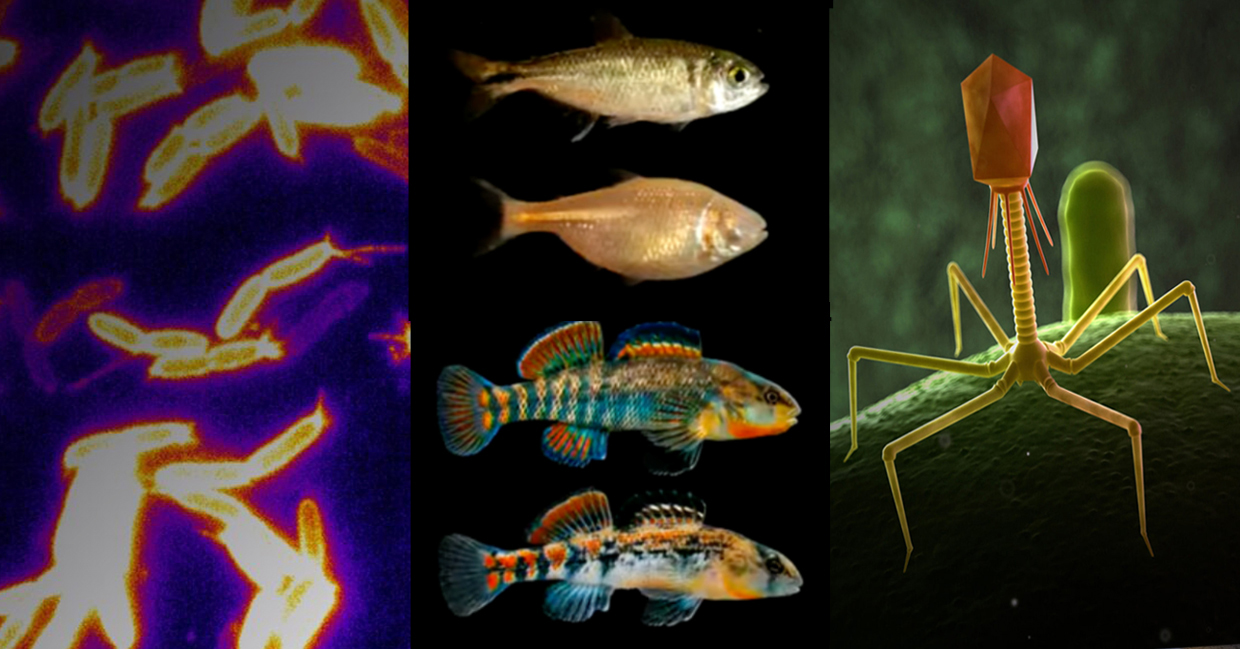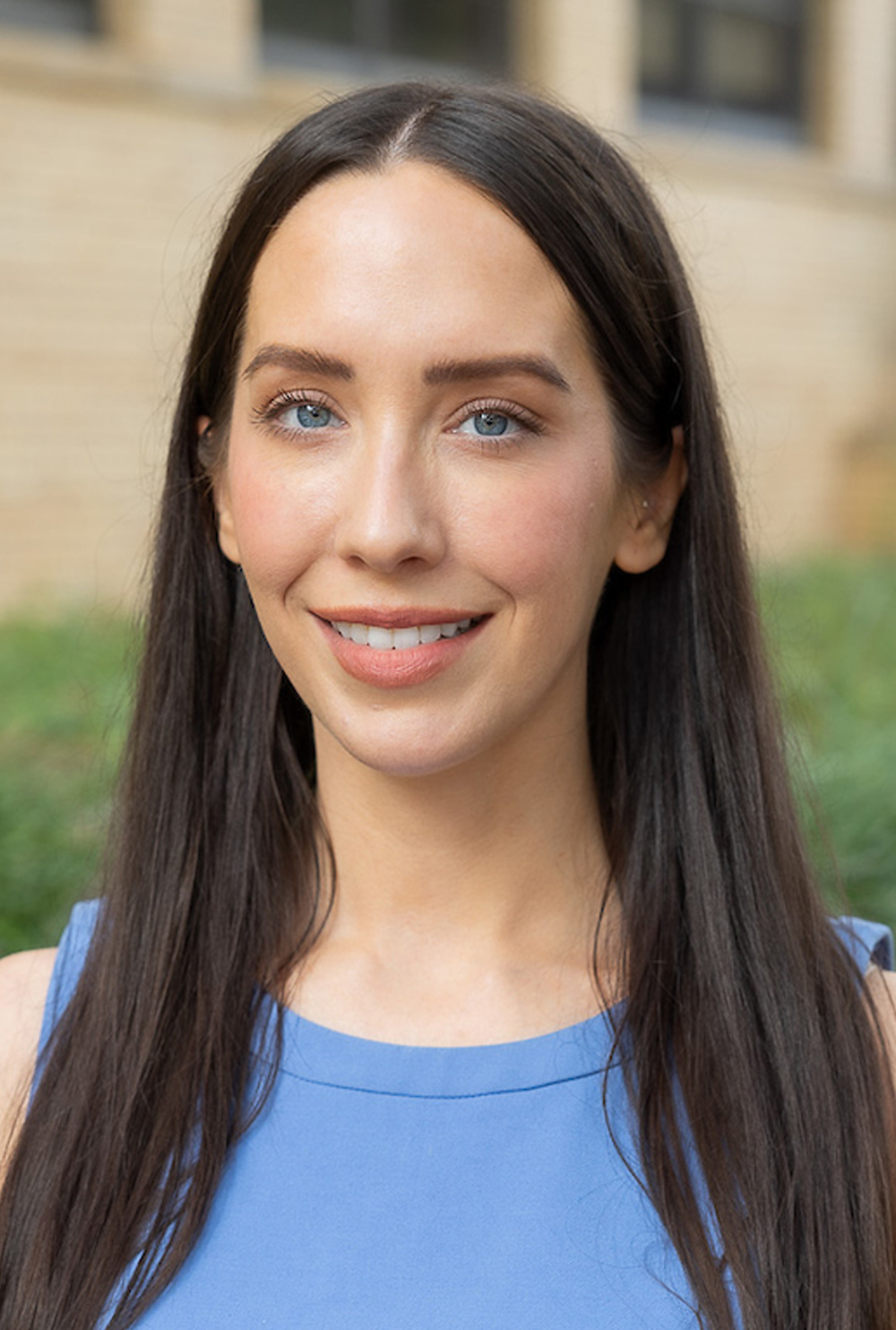
Three faculty members in the Department of Biology at Texas A&M University have been recognized for their sustained research potential with National Institutes of Health (NIH) Maximizing Investigators’ Research Awards (MIRA) to support their research programs related to various aspects of cellular behavior, behavioral and neurobiology involving biological nanomachines, model organisms and microbial predators.
Dr. Matthias D. Koch, an assistant professor who joined the Texas A&M Biology faculty in 2022, received a $1.9 million grant to support his laboratory’s work at the intersection of biology and engineering to explore type IV pili (TFP) — surface-exposed fibers that mediate many functions in bacteria, such as the perception of touch of their surroundings and regulating their ability to cause diseases.
Dr. Rachel L. Moran, an assistant professor and member of the Texas A&M Biology faculty since 2023, received a $1.9 million grant to support her laboratory’s ongoing work to better understand the complex social behaviors in the model organism darter fish, from the genetic and evolutionary mechanisms involved to the neural basis behind paternal care.
Dr. Jolene R. Ramsey, an assistant professor who joined the Texas A&M Biology faculty in 2022, received a $1.9 million grant to support her research on the Earth’s most abundant and powerful natural predators of the microbial world, bacteriophages, to better understand how they kill bacteria with the goal of developing new strategies to eliminate problematic pathogens that cause human disease.
Established in 2015, the MIRA Program is intended to better fund science by better supporting investigators and their overall research programs through single, unified grants that improve their funding stability, versus multiple smaller awards. Each of the three scientists’ projects will build on their previous success in their respective research areas, which have broad application across fundamental biological sciences as well as in multiple cross-disciplinary-defining directions.
"'This is a remarkable achievement for all three of these junior faculty," said Dr. Alex C. Keene, professor and head of Texas A&M Biology. "All three are on a trajectory that suggests they will be leaders at Texas A&M and in their fields."
About Dr. Matthias Koch

Koch earned his master’s degree in physics in 2010 and his Ph.D. in biophysics in 2015 from the University of Freiburg in Germany. He was a postdoctoral fellow in molecular biology and biophysics at Princeton University from 2015 to 2022 before coming to Texas A&M, where his research combines super-resolution and force microscopy, genetics, molecular biology and theoretical modeling to understand how bacteria infect host tissues and interact in general with their physical environment.
Koch notes that bacteria are everywhere in our world and mostly go unnoticed, until we encounter one of the many pathogenic varieties and get sick. Understanding broadly conserved virulence factors that inflict damage and cause us to get sick would enable scientists to develop drugs and treatments with a wide spectrum of applications. Because drug development is extremely expensive and time-consuming, Koch says targeting conserved mechanisms is of highest priority.
The Koch laboratory focuses their study on how TFP — which he describes as a cellular nanomachine resembling a human hand and fingers — mediate function as one such widely conserved virulence factor that enables the cell to hold on to its environment, whether crawling over surfaces or squeezing a substrate to feel its mechanical compliance. In other words, as Koch puts it, “Can the cell feel if the world is soft like an open wound or the slimy inside of our lungs, or hard like the steel of a surgeon’s table?” During his postdoctoral study, Koch discovered that the clinically important pathogen Pseudomonas aeruginosa uses its TFP to tune a master regulator of more than 100 of its virulence programs to how it perceives its mechanical surroundings.
“We are trying to understand how this biological machine works by tying together multidisciplinary questions, viewpoints and techniques ranging from engineering to biology,” Koch said. “Given my training as a biophysicist and molecular biologist, I want to understand how the individual parts of the machine fit together and function.”
In the process of developing a blueprint for TFP to help determine fit and function, Koch also hopes to learn what accelerates or slows its activity — virulence regulation, in particular. His lab’s ultimate goal is to better understand these concepts in living cells by seeing them with the help of extremely sensitive cameras, powerful lasers and super-resolution light microscopy techniques.
“Seeing is believing,” Koch added. “Obtaining a deep understanding about how every component of this machine works and how they interact with each other will enable us to conceive new ways to disrupt this important virulence factor. Hopefully, one day, this will result in the development of drugs with novel mechanisms of action that circumvent the many disadvantages of common antibiotics, such as the rapid gain of multi-antibiotic resistance.”
About Dr. Rachel Moran

Moran earned both her bachelor’s and master’s of science degrees in biological sciences from Northern Illinois University in 2011 and 2013, respectively, as well as her Ph.D. in ecology, evolution and conservation biology from the University of Illinois at Urbana-Champaign in 2019. She completed a three-year postdoctoral research appointment in ecology, evolution and behavior at the University of Minnesota and an eight-month Chicago Fellowship in biological sciences at the University of Chicago prior to coming to Texas A&M in January 2023, where her research interests include local adaptation and speciation in fish and the genetic basis of convergently evolved traits.
Moran says that the degree to which behavioral variation is shaped by experiences or determined by heritability has long captivated biologists and non-biologists alike. While it is now clear that behavior often has a genetic component, she says linking molecular mechanisms to such complex traits as behavior by mapping specific genetic variants underlying differences in behavior remains a major challenge for biology. Her research program aims to address this challenge by applying cutting-edge functional genetic tools and -omics technologies to uncover connections between genetic and behavior variations in natural populations of darters, a highly diverse group of North American stream fishes.
Although the neural, physiological and molecular mechanisms of maternal, or female-provided, care have been widely studied and appear to be highly conserved across deep evolutionary time, Moran says a critical gap remains in our understanding of the mechanisms of paternal, or male-provided, care. While the role of maternal care in offspring health is widely accepted, she cites recent research which has shown that paternal care contributes unique advantages to offspring, including significant impacts on survival and psychological development.
Beyond representing the most diverse group of vertebrates in North America, Moran says darters feature ample variation in reproductive strategy among their many species. Because male-only parental care has evolved multiple times in independent darter lineages and also has been secondarily lost in at least one species, she notes that darters provide an optimum opportunity to investigate the genetic and evolutionary drivers of paternal care.
Moran and her research group plan to use the darter system they have developed along with genomic resources and functional genetic tools specific to darters that they have pioneered to study the biological basis of their evolved differences in paternal care. She will then leverage natural replication in this system to test the hypothesis that similar genetic and molecular changes are behind the repeated evolution of paternal behavior. The proposed work will be complimentary to other lines of research in her lab that are aimed at applying population genomic, quantitative genetic and functional genetic methods in darters and other fish models to test fundamental evolutionary hypotheses and uncover gene-phenotype connections.
“This innovative project will bridge behavioral neuroscience and evolutionary genomics — fields that have historically remained largely siloed and limited to model systems — to investigate the mechanistic basis of evolved differences in behavior in natural populations, setting the stage for a highly integrative, cutting-edge research program,” Moran said. “Our research will fill a critical gap in the literature by providing novel insight into the genetic and neural basis of evolved variation in paternal care behavior in natural populations. This work will contribute to our understanding of the biology of paternal care in a vertebrate system and may reveal insights into the mechanistic basis of variation in this complex behavioral trait in humans.”
About Dr. Jolene Ramsey

Ramsey received her bachelor’s degree in biology and Spanish from Western Colorado University in 2010 and her Ph.D. in microbiology from Indiana University Bloomington in 2017. She was a postdoctoral research scientist in the laboratory of Texas A&M Emeritus Distinguished Professor and Regents Professor of Biochemistry and Biophysics Dr. Ryland Young and the Center for Phage Technology for four years before beginning her independent academic career as a visiting assistant professor and Accountability, Climate, Equity and Scholarship (ACES) Faculty Fellow in Texas A&M Biology in 2022. Her current research uses molecular virology and genomic tools to study how phages manipulate their host cells, particularly at the exit stage, to answer fundamental questions about how phages kill bacteria and what effect that has on the surrounding environment.
Ramsey explains that phages are viruses that infect only bacteria. They kill their bacterial host cells using a tailored suite of programmable proteins to release newly-built virus particles, thereby causing the destruction of the cell through a process known as lysing. She notes that phage-induced lysis is the most common cell-lysis event on the planet — one that drives both microbial biogeochemical nutrient cycling and population dynamics in cellular life.
“Bacteria often co-opt phage-lysis proteins to accomplish other diverse behaviors beneficial to a population, such as seeding biofilm establishment and releasing toxins,” Ramsey added. “Studying novel phage-lysis proteins will advance our understanding of both phages and fundamental principles in their hosts, along with that of bacterial envelope layers and their regulation.”
During the next five years, she and members of the Ramsey laboratory will focus on in-depth molecular characterization of two specific novel lysis proteins and diverse candidates from less-studied phages and microorganisms found in the human gut and as plant pathogens. They plan to use genetic, biochemical and microscopy approaches to elucidate mechanisms of individual proteins as well as cutting-edge techniques in genetic engineering, imaging and molecular analyses available at Texas A&M to discover the phages’ strategies for interacting with and ultimately killing bacterial cells.
“Overall, these projects are expected to uncover divergent mechanisms of action used by phages in E. coli model systems and other prevalent gut microbiota,” Ramsey said. “Broadly, this foundation can be leveraged to study lysis protein types active across many different bacteria, which is critical to understanding global microbial population fitness and turnover. The new molecular strategies uncovered here may lead to more effective medical treatments, since lysis is also the basis of successful phage therapy that aspires to use phages as alternative treatments for antibiotic-resistant bacterial infections.”
Learn more about the MIRA program or other current research underway in Texas A&M Biology.
